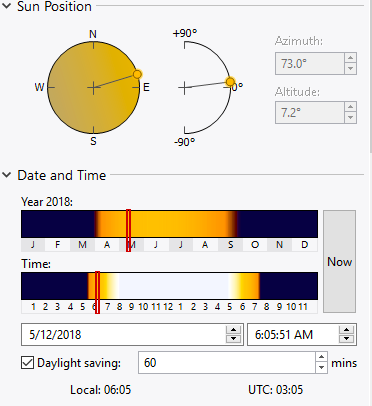Hello Grasshopper and Ladybug Community,
I’m currently working on a project where I want to create a custom gradient in Grasshopper using Ladybug data that mimics the Rhino Sun “Date and Time” gradient.

The goal is to have a gradient that changes according to the specified date, reflecting variations similar to sunrise, midday, and sunset lighting conditions as seen in Rhino’s sun path tool.
While I have some experience in creating custom gradients using tools like Ambrosinus Toolkit (Ambrosinus Toolkit | Food4Rhino), I’m struggling to figure out how to integrate specific solar data such as sunrise/sunset times and the sun’s brightness throughout the day into my gradient.
Here’s what I need help with:
- How to retrieve accurate solar data (like sunrise and sunset times, sun intensity) for a given date and location in Grasshopper Ladybug.
- Methods to dynamically adjust the gradient’s colors and intensity based on the sun’s position and brightness throughout the day.
- Any existing scripts or components within Grasshopper Ladybug that could facilitate this process.
Thanks in advance for your help and insights!